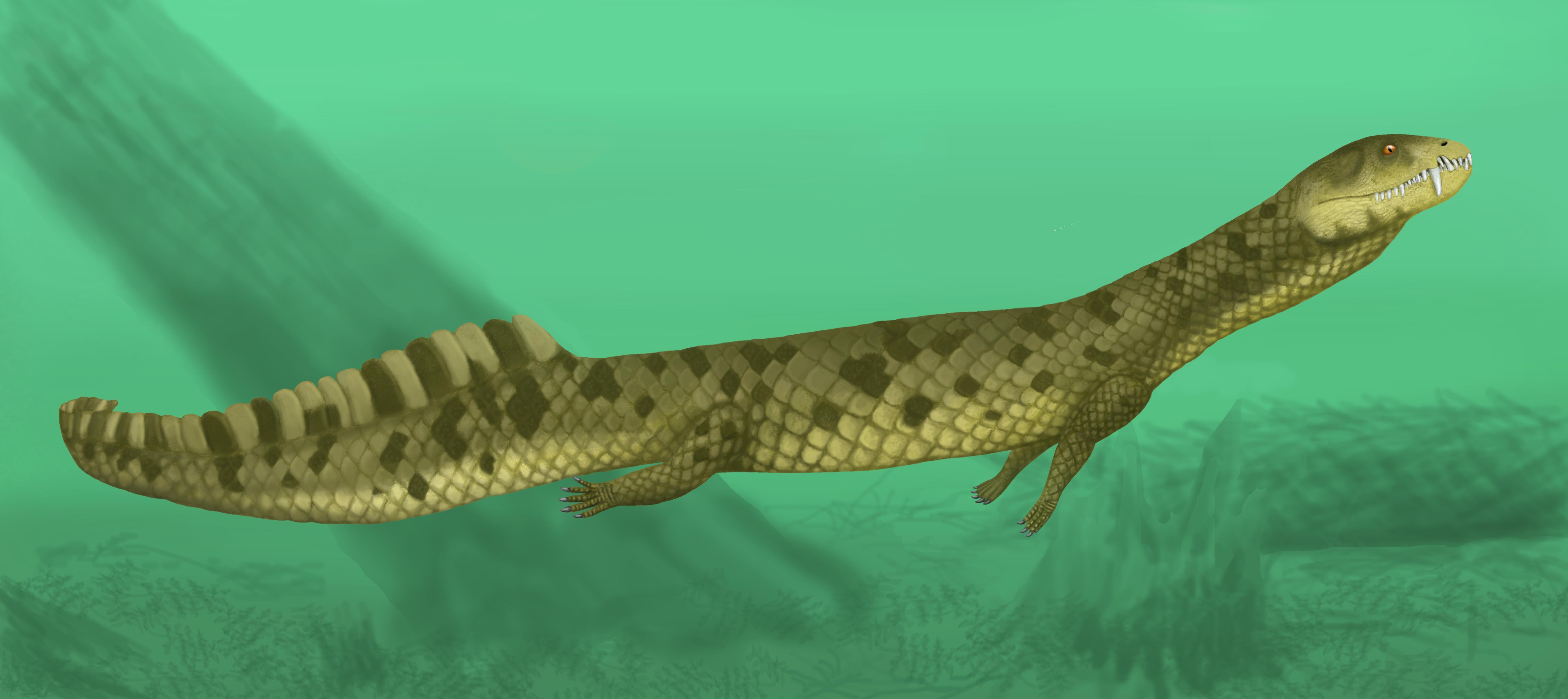Vancleavea campi

Vancleavea campi from Wikipedia
Note: the restoration with scary teeth
protruding from jaws is probably naive.
Name: Vancleavea campi [Camp's animal in honor of Van Cleave]
When: Late Triassic Period, about 228 - 202 million years ago
Where: Ghost Ranch, NM, and Petrified Forest National Monument, AZ.
Claim to fame: Vancleavea was the last surviving relative of the archosaurs (descendants of the last common ancestor of crocodilians and birds) that was not, itself, a member of the group. It lived in the Late Triassic Period at a time when proper archosaurs had taken over the terrestrial vertebrate fauna. Indeed, Vancleavea could have encountered early dinosaurs if any of them waded into fresh water - Vancleavea's favored habitat.
When first discovered, Vancleavea's skull was enigmatic because it is highly specialized in comparison to other archosaur-relatives, making it difficult to place on the Tree of Evolution. Its side-to-side narrowness, for example, is a natural feature, not a mistake or artifact of preservation. This "hatchet-headed" configuration is good for delivering strong vertical bite forces but unable to resist twisting or side-to-side loads well. We typically see the "hatchet-head" in big meat-eating dinosaurs, not little aquatic predators, so Vancleavea really is ecologically unique.
A cool Vancleavea fact is that its body was covered in heavy scutes - scales with bony cores, like one sees in the armor of living crocodylians. What's more, essentially its entire array of scutes is preserved, giving us an excellent idea of what it looked like.

Vancleavea upside-down rhyton.
About the piece: I was inspired to make this "upside-down" rhyton of Vancleavea when I encountered this image of an Ancient Greek rhyton depicting a dog. The piece is designed to rest on its lip and handle, tripod-style, when not in use. It works, but works best if you don't use harsh language in its presence, as even a slight push will cause it to nose-over. The learning curve!
- Long, R. A. & Murry, P. A. 1995. "Late Triassic (Carnian and Norian) tetrapods from the southwestern United States". New Mexico Museum of Natural History and Science Bulletin. 4: 1–254.
- Parker, W. G.; Barton, B. (2008). "New information on the Upper Triassic archosauriform Vancleavea campi based on new material from the Chinle Formation of Arizona". Palaeontologia Electronica. 11 (3): 20p.